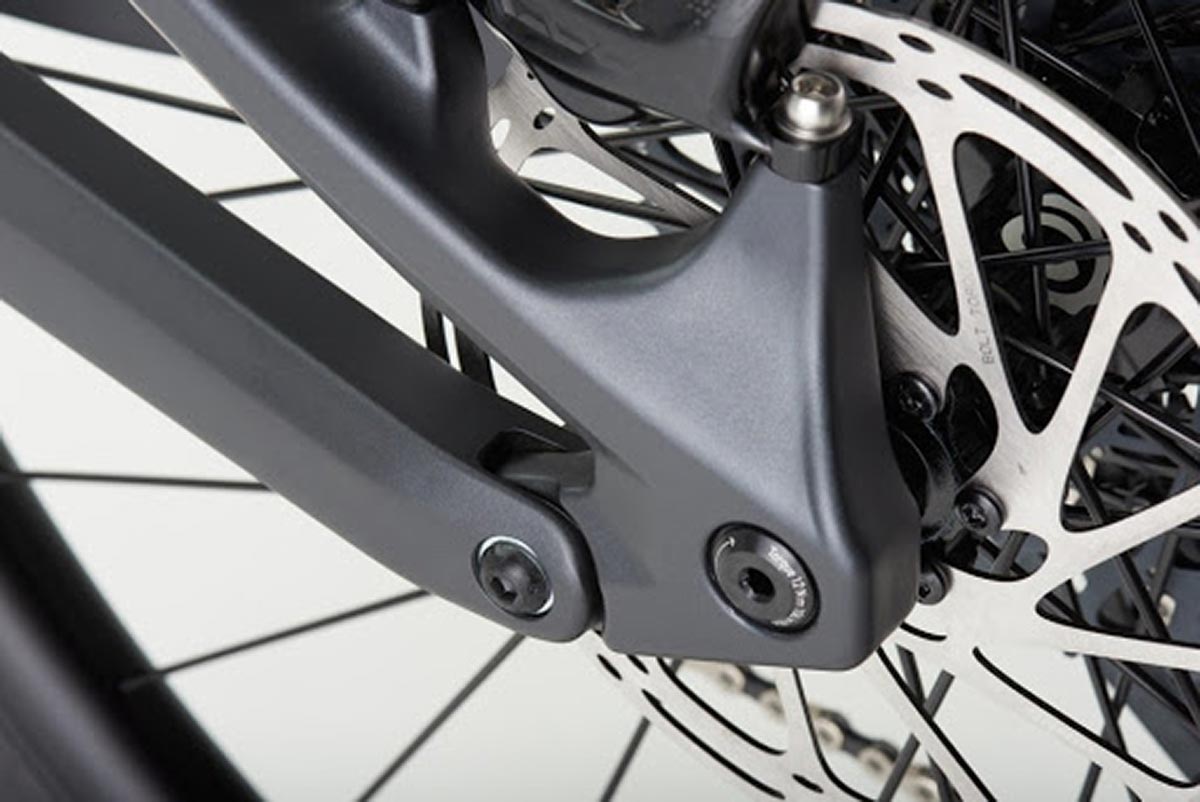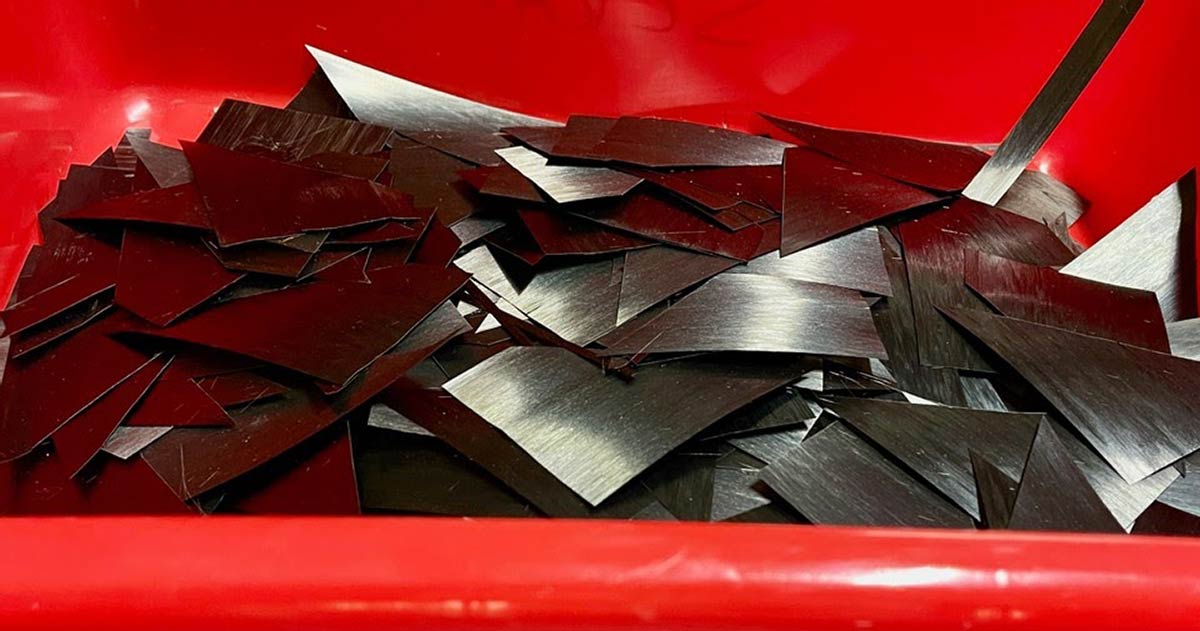We know, there’s no such thing as a stupid question. But there are some questions you might not want to ask your local shop or riding buddies. AASQ is our weekly series where we get to the bottom of your questions – serious or otherwise. Hit the link at the bottom of the post to submit your own question.
Welcome back to the Bikerumor Ask A Stupid Question series. This week, we asked carbon frame manufacturers about the recycling of their composite products. Can it be done? And if it can, why aren’t more manufacturers doing this? Joining us to discuss the topic are Instinctiv Bikes and Guerrilla Gravity.
Your expert contributors this week are as follows:
- Andreas Knol, Founder of Instinctiv Bikes
- Matt Giaraffa, CTO and Founder, Revved Industries; Chief Engineer and Founder, Guerrilla Gravity
Why can’t carbon frames be recycled yet? And, what are brands doing to improve in this area in future?
Guerrilla Gravity: Carbon fiber frames can be recycled, it’s just a matter of how much work is required to recycle the material and how useful the recycled product is after the process is completed.
Essentially, there are two types of recycling for carbon fiber bike frames and components: one is manufacturing waste (i.e. not throwing material trimmings or “drop” away at the factory) and the second is end-of-life product recycling (i.e. not throwing harvestable material away after its useful life).
There are also two types of carbon fiber composites in the bike industry: traditional thermoset resin carbon composite (what essentially all “carbon” products are made of today) and the new thermoplastic resin carbon composite (the first modern application of which in cycling is Revved Carbon).
To recycle traditional thermoset carbon manufacturing waste, it is first chopped up, then the partially cured resin is chemically stripped, which results in dry chopped carbon fibers. The fibers are then ground up to ~1mm long, added to thermoplastic resin as a reinforcement for thermoplastic pellets suited for injection molding.
That material can then be used to make injection molded parts that are a bit stronger than normal plastic injection molded parts. Applications where this could make sense are composite pedal bodies, shoe soles, etc.

Revved Carbon manufacturing “drop” is more straightforward to re-use within the manufacturing environment. Uniquely to Revved, repurposing our material is a one-step simple process with no chemicals needed and the resulting fibers are much longer. We can then directly mold this laminate into a variety of structural components of a new bike frame. As such, and as a company mandate, we are moving towards zero manufacturing waste, overall.
End of product life recycling of traditional thermoset carbon bike frames is similar to the method used for manufacturing waste, with extra steps to remove contamination, so it is environmentally and economically cost intensive.

End of product life recycling of Revved Carbon is similar to reusing manufacturing drop, has fewer steps involved than traditional thermoset carbon, and the resulting material has long fiber lengths, increasing the mechanical properties for its next use. Because of the long functional life of the bikes themselves, our current focus is in productionizing the reuse of manufacturing “drop” in our US production environment, and we remain committed to continuously developing this area of our technology.
Instinctiv: Carbon fiber is a composite material, which means that inherently it is harder to recycle because there are carbon fibers embedded into resin. You will need to remove the resin without damaging the fibers in such a way that you can use both materials again.
Very often, carbon parts end up in a shredder, to make the process of separation easier. The material cannot be used to build new bike frames, but is used to make strong and durable public transport seats or brake handles.
This is obviously not exactly recycling in the sense that new bike frames can be built, but the material is not lost and will get a new function. But new developments happen very quickly. For instance, Hitachi Chemicals have some interesting developments where they are able to use a pyrolysis processes to recycle carbon fibres without shredding them, keeping the long fibres intact. This means that new high-quality prepreg material can be made to build bike frames again.
Actually, in our first production batch of the M, we used 7% recycled carbon, that we bought from the automotive industry in Germany. This material has about the same weight of normal prepreg material at about 90% of the stiffness. So, the material is great and can be mixed with virgin material to create high quality bike frames.
Only in terms of logistics was it not such a good option. We had to transport the prepreg rolls in cooled containers with dry ice from Germany by air to the carbon factory. That sounds a bit less sustainable. Most of our production steps are carried out in the EU. We actually add around 55-65% of the production value in the European Union, but for now our carbon parts are made in Taiwan, so we had to reevaluate the use of recycled carbon prepreg.
If in some moment in the future we are able to move carbon production to Europe, we will definitely use the recycled carbon material again.
Recycling is of course the real end of the cycle, like with a big crash where the frame is irreparable or it happens after many years of use. Before that point we’d like to focus on durability, using the bikes for as long as possible, passing it on to other riders or the next generation.
If during this time something happens, then in many cases the carbon can be repaired. Our partners in Switzerland have a carbon repair shop, so many small frame damages can be easily repaired. And if for some reason one of our riders cannot use his or her bike anymore, then we have a buyback program. If the bike is relatively young and undamaged, then we buy the bike back and see if we can find a new rider for the bike.
Finally, we also like to help with recycling. We are in contact with a carbon recycling factory. So, if one of our riders had a crash and damaged the frame beyond repair, the frame can be sent to us and we will recycle it. We pay for the transport costs and our riders will get a nice Instinctiv jersey in return.
We are looking forward to doing more and using recycled material again in our future bikes. We believe that the weight to stiffness ratio of the recycled material will get better and better over time, which means we can use more and more recycled material in our frames.
Got a question of your own? Click here to use the Ask A Stupid Question form to submit questions on any cycling-related topic of your choice, and we’ll get the experts to answer them for you!






